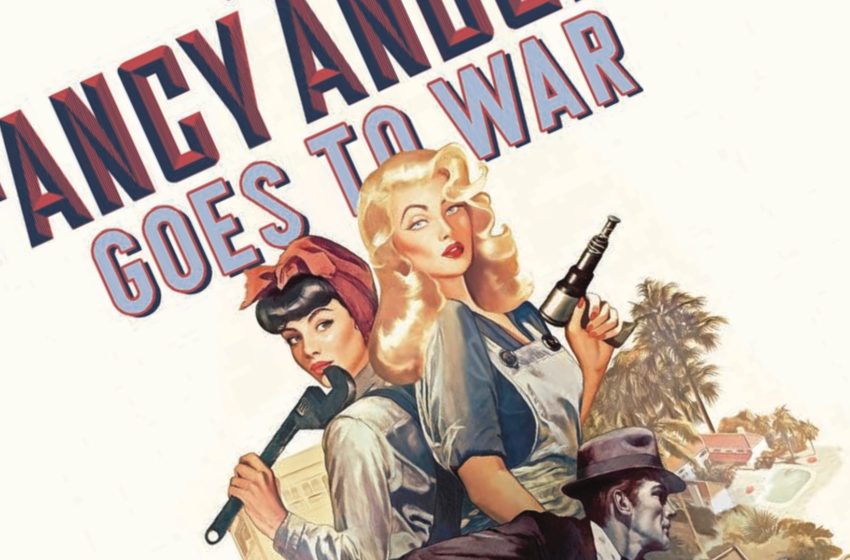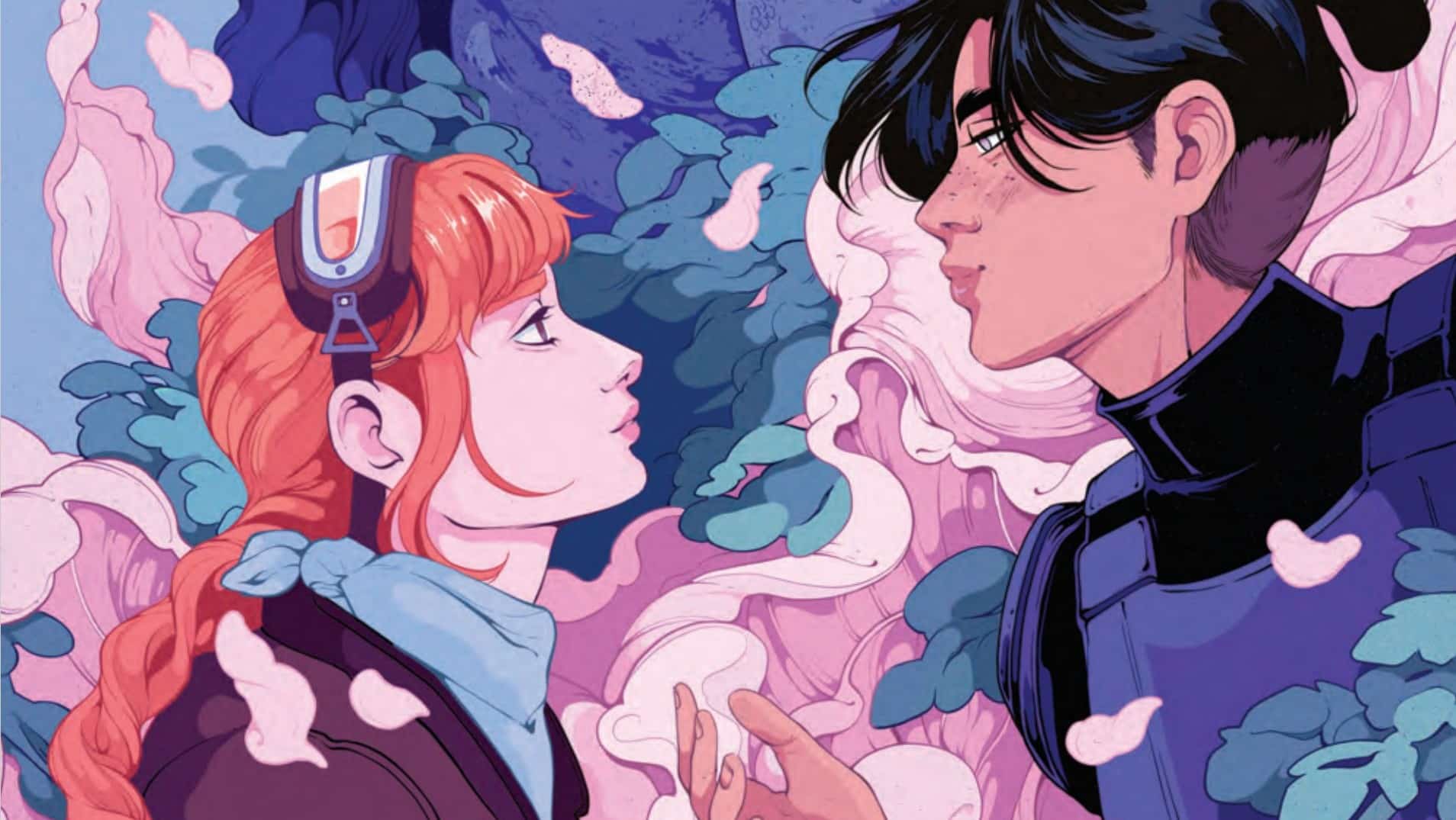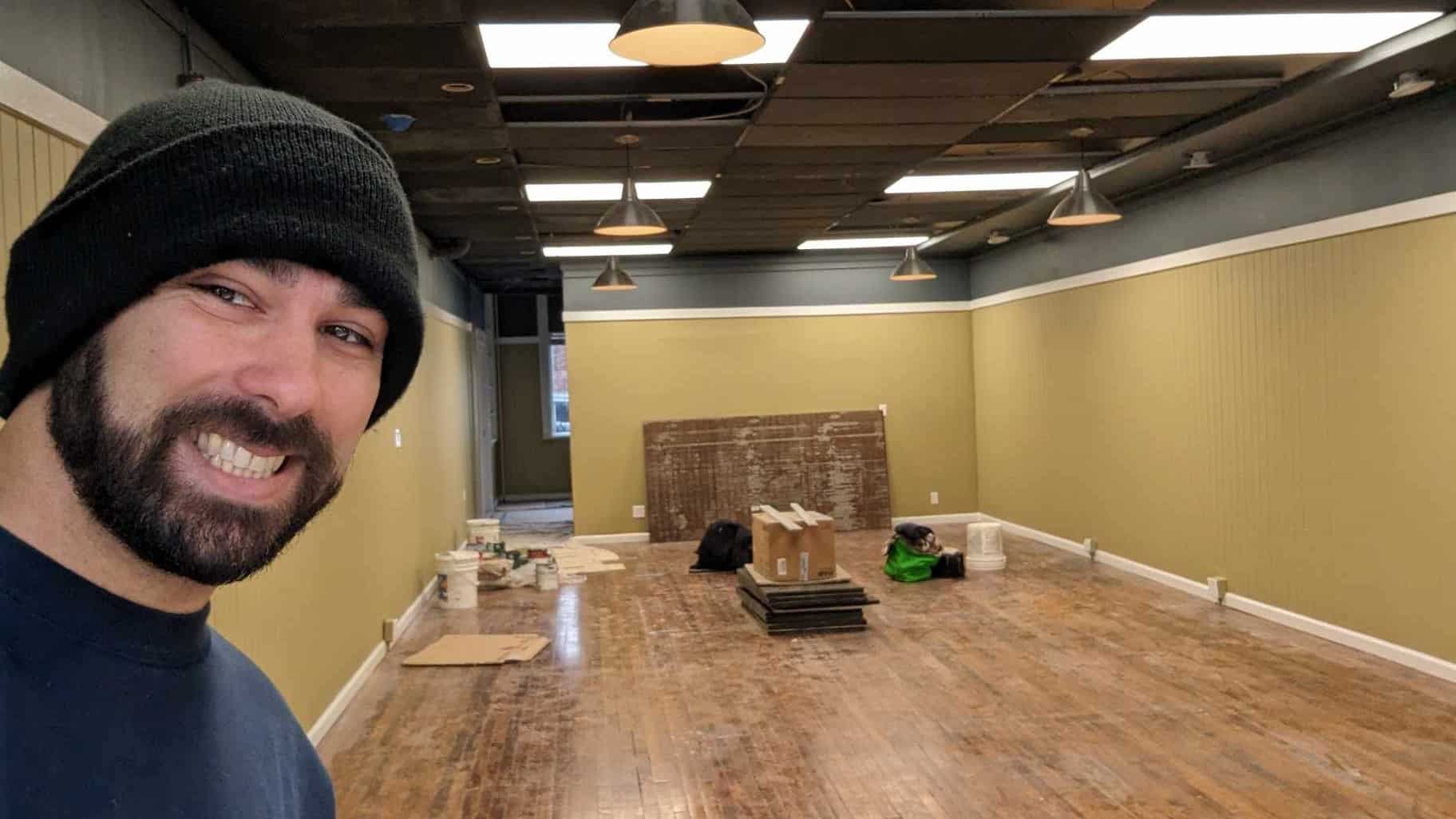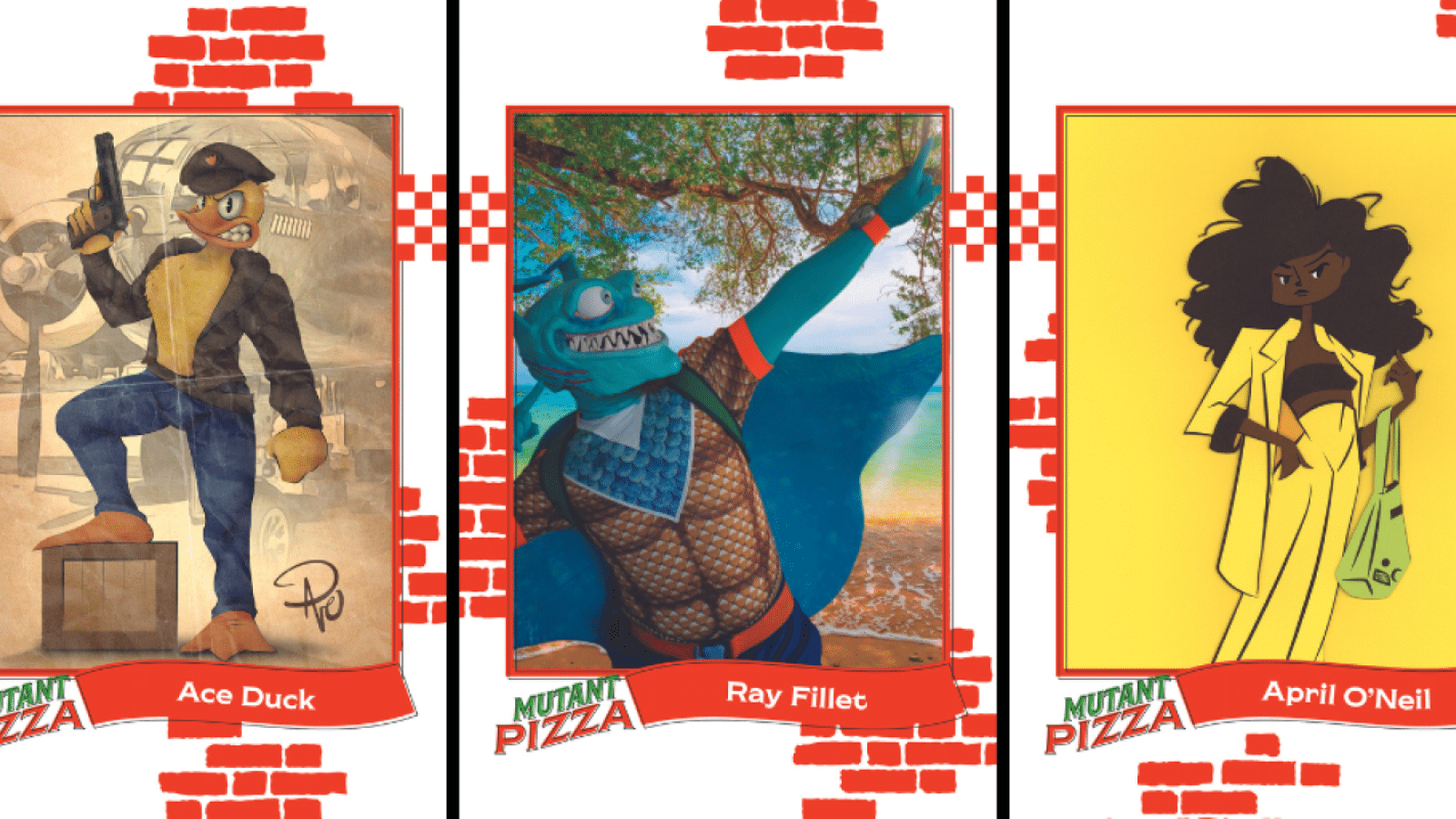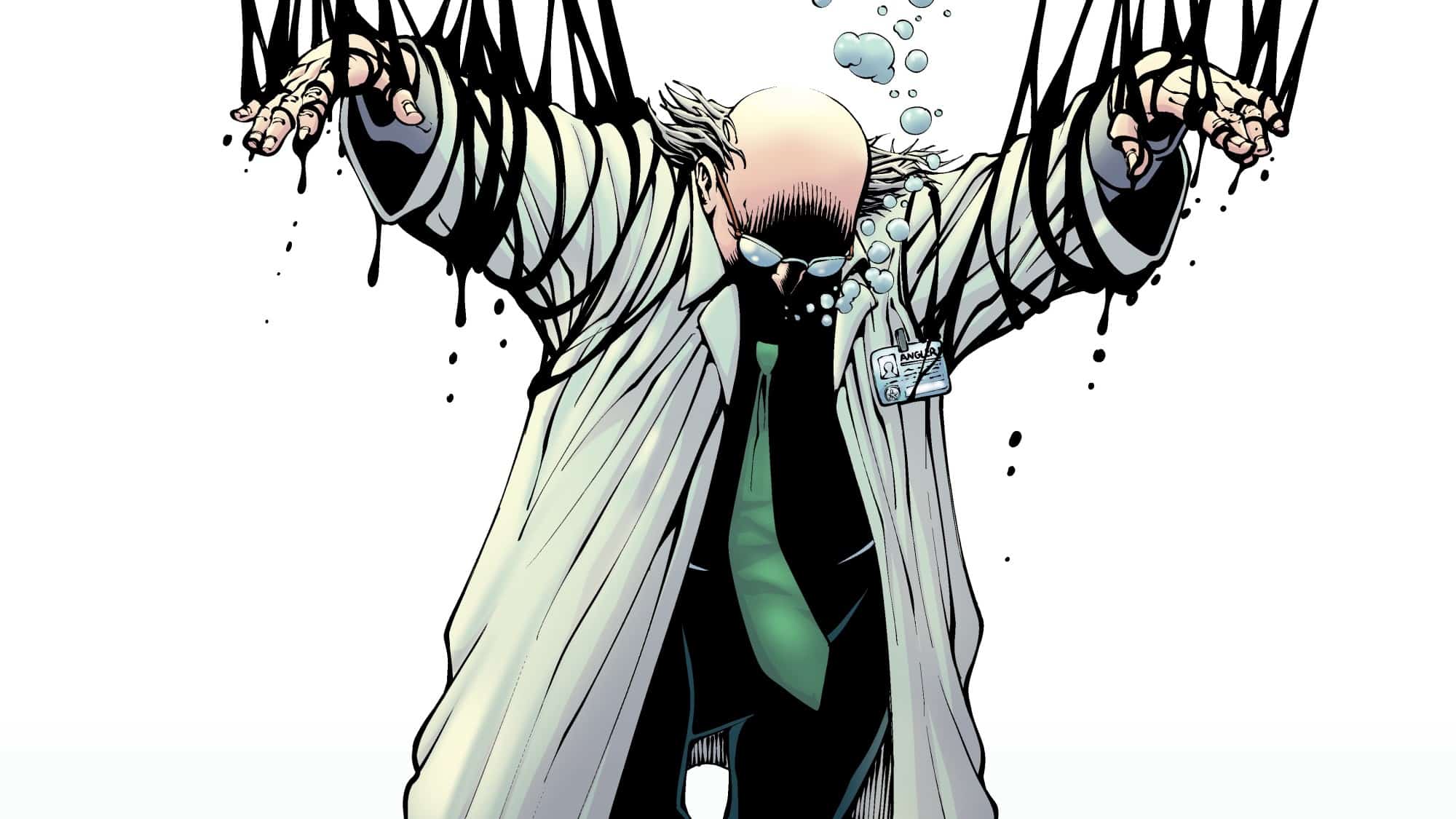FROM THE DESK OF WILLIAM C. NEVIN
Sept. 27, 1948
THUD.
He bolted awake and looked at the wall clock to his immediate left.
11:48 a.m.
Clifton was early.
He cursed the mailman and shifted slightly in the white wingback chair, waiting for all his faculties to arrive before he’d attempt the chore of standing and walking six feet to see what had been delivered. His mouth was a five-fingered death punch of last night’s whiskey, a bourbon so bad it should have been sold as floor cleaner first, disinfectant second and rat poison last. He poured a flickering finger. Nothing better to get that wet mush gravel feeling out of his mouth, he thought.
He stretched. His aging back, once again subjected to another night of sleeping at a desk, protested with a sharp sting. He winced. As a writer at large for the ComicsXF Tribune Herald, he could afford rent for a shabby office or an embarrassing tenement flop but not both, so he went with the office and hoped the landlord would not catch him sleeping on the couch on the rare nights he could shamble from his desk to a place approximating a normal sleep spot.
The thing that had stirred him – the package thrust through the mail slot with Clifton’s usual carelessness – was a small parcel wrapped in string and brown paper. He picked it up and felt its weight in his hand. Could be a mail bomb, he thought. But he rarely attracted that much attention. His ego – a rampant, monstrous, uncontrollable thing even as his workplace/home sat adorned with empty Wild Turkey bottles and the dusty yellow bile colored leaks from the ceiling – hoped it was a mail bomb because that would show he still mattered. Like in ’43. When times were good.
He untied the string holding the parcel together. It did not explode. His mind registered a brief disappointment. It was a book, a small leather-bound volume titled Fancy Anders Goes to War, with an enclosed letter.
“Greetings and salutations, comics journalist,” the letter read. “Enclosed you will find a copy of Fancy Anders Goes to War, the latest illustrated prose novella from author Max Allan Collins. If you are so inclined, please read the work and respond via post with questions for Max. We eagerly await your response.”
He finished his breakfast bourbon and grimaced. He’d play the game.
Like he always had.

• I’d like to start with your heroine, Fancy Anders. She’s from Southern California’s upper crust, but she signs up for this undercover assembly line job at an aircraft manufacturing plant. She doesn’t seem to be afraid of hard work, yet she’s discerning enough to differentiate watch brands by their ticking sounds. How would you describe her, and what was the process of putting her together like?
Some characters are constructed piece by piece, often as the subject matter or plot idea indicates. But Fancy arrived more or less fully formed. All of the parts fell into place – the need for a strong female protagonist who could represent the women in World War II who were thrust into the workforce, a protagonist at once glamorous in a ‘40s movie star way but who isn’t an airhead society girl. I knew at once that her father was a private detective with a more working class background and her mother a social butterfly. And that Fancy would have been part of that upper-class scene in Los Angeles, but with a bent toward tomboy-ish adventure – a wild child of sorts, who went to Barnard but majored in boys at Columbia, with a pink Packard, a motorcycle, a sailboat, a plane, and she shoots well, too. She wants to follow in her father’s footsteps at his detective agency, but that’s not allowed. Then the war changes all that.
• Fancy is certainly capable – she picks up riveting in a week, after all – but she doesn’t seem to be all that good at undercover work, at least inasmuch as her cover gets blown pretty quickly. How do you balance creating a lead character who’s strong and confident along with giving her space to make mistakes and deal with the subsequent adversity?
She is smart and tough but, due to her upbringing, not street savvy. That combination makes it possible for her to be credibly heroic and brave and yet screw up. She wasn’t trained as an investigator, and her father shuts his agency down essentially and leaves her to answer the phone and dust the desks. When she has the opportunity to do more, she seizes upon it.

• You’ve written comics, prose and, with this, illustrated prose. As a writer, what do you see as the relative differences in your job between those three, and what makes Fancy Anders Goes to War ripe for the illustrated prose treatment?
Prose is an interior experience and film an exterior one. We all see the same movie, but we don’t “see” the same novel. Comics is an appealing approach because it’s the most sophisticated of the forms, despite its sometimes lowly reputation. Slicing up the story into images controls pace and mood and so much more. The challenge is always not to be redundant – to let the images talk. For Fancy Anders, I liked the idea of a kind of old-fashioned approach, retro in the best sense – an illustration at the head of each chapter, to bring the characters and setting and times and atmosphere immediately alive. Of course, getting Fay Dalton’s participation was key – on the one hand, having a young woman’s input into a story about this young woman was an extremely attractive proposition. But I love her work and it was a chance to collaborate, in a way. She had done covers for two recent serialized graphic novels of mine – issues of Quarry’s War and Mike Hammer: The Night I Died.
• Speaking of the illustrations, what was the creative process with Fay Dalton like, and how do you think she aids in the storytelling? And what was your thinking in exactly
where to place the illustrations – i.e. before each chapter and not after or in the middle?
We discussed doing spot illos, but I was always keen on having a full-page illustration at the start of a chapter, and that’s all. That’s a little limiting, because you don’t want to give anything much away, in the spoiler alert sense. I suggested images to Fay and she chose what she liked best and in some cases suggested her own. Very easy to work with. The illustrative interruptions, coming at the end of one chapter and the beginning of the other, make for a serialized feel that in itself is nicely retro.

• You’ve also written your fair share (or more than?) of private eye/detective fiction. What do you see as the foundational elements of the genre, and what separates a good PI story from a bad one?
I’ve used the word “retro” here several times, but I think the pitfall for traditional PI fiction is to try too hard to invoke past fictional detectives, particularly Phillip Marlowe. Trying to write like Raymond Chandler is usually a bad idea. I do my best to avoid anything campy in dialogue or description. I don’t condescend to the reader or to the genre. And the detective needs to be a fully realized character, not a “type.” But the strength of the form is that the detective has a purpose and reason for looking into things – most detective stories are a series of dialogues between investigator and suspects/witnesses. That’s all The Maltese Falcon is, and it’s one of the greatest novels ever written.
• What was alluring in writing about life on the homefront during World War II? In researching the Rosie the Riveter character specifically, was there anything that surprised you? How important was it for you to contrast the propaganda with what life in the factories was actually like?
It’s a mix – on the one hand, the country was pulling together in a way never seen since, not even in the wake of 9/11. On the other, the problems of race and gender were there and need to be acknowledged. I tried to balance it. In Fancy Anders Goes to War, some readers may be surprised by how diverse the WWII female workforce was. They will be less surprised to learn of the sexist behavior of the men working in those defense plants dominated by women.
• How would you describe some of the other characters in Fancy’s life and where they fit in her story? Also, placing papa Andy Anders in a professional circle with “Wild Bill”
Donovan was … an interesting choice that I hope goes somewhere.
The secondary characters, like Fancy, somewhat presented themselves. Her cop friend is also somebody she once had a fling with and who may become something more serious as time, and stories, go by. The young women in the aircraft factory, very much not from her social circle and experience, become friends and confidants and even associates as the three Fancy novellas continue. Fancy lives a wealthy, privileged life that represents a kind of fantasy existence for the reader. At the same time she has no snobbery or prejudice to keep her from building, and later maintaining, friendships with the Rosie the Riveters she meets at the plant. As for “Wild Bill” Donovan, he’s been on the fringes of several of my Nathan Heller novels, and keeps threatening to be more.

• As an aside I’m personally curious about, your Wikipedia page has a picture of you with the great Leslie Nielsen – surely, you can tell me more about that.
Not long after Airplane! came out, I stepped onto a plane and there he was, Leslie Nielsen, sitting in first class. Our eyes met and we both smiled and started laughing, as I said, “No…no…no.” I introduced myself as the writer of Dick Tracy and told him I was doing a character called Lofty who was a villain whose head was cut off by the upper part of the frame – and that I’d got the idea from a similar running gag on Police Squad. We chatted and it was a lovely meeting. We later spoke on the phone a few times. Wonderful man.
• Finally, what’s next for the great Fancy Anders? What do you hope readers get out of Goes to War?
Next up, in the same novella format with wonderful illos by Fay Dalton, is Fancy Anders For the Boys. Fancy again goes undercover, this time at the Hollywood Canteen, where movie stars mingled with soldiers and sailors. It’s somewhat based on a real crime, a bathtub murder. After that, Fancy Anders Goes Hollywood – as an extra in a Warner Bros. film. Thanks for calling her “great” – I think she’s pretty special myself. And keep an eye out soon for the novel The Many Lives of Jimmy Leighton, a genre splice of s-f and mystery that I did with SCTV’s Dave Thomas … also from NeoText.

Fancy Anders Goes to War is available now from NeoText.
Will Nevin loves bourbon and AP style and gets paid to teach one of those things. He is on Twitter far too often.

